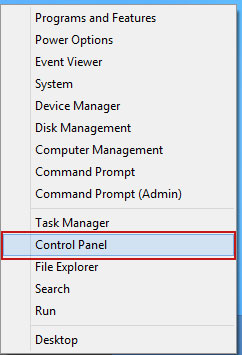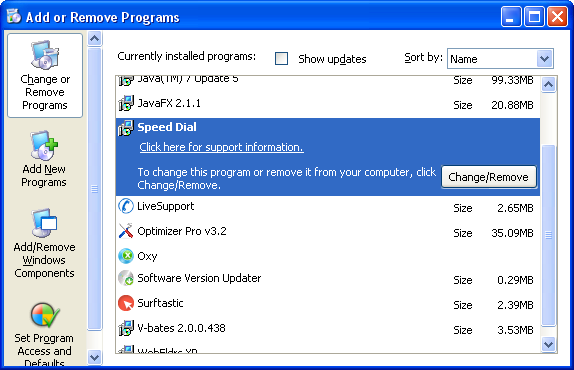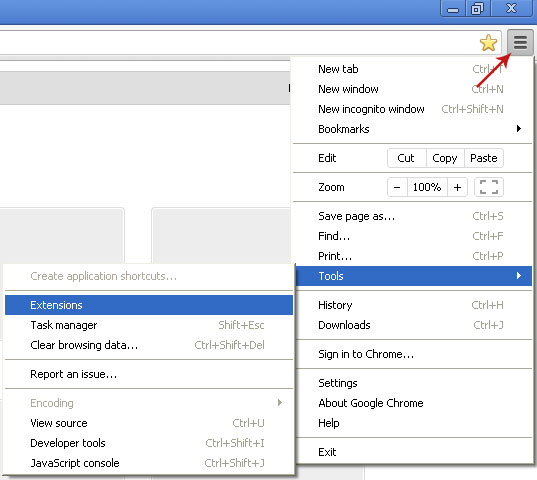Here's an example of ads by Speed Dial:
Plenty of us also download freeware - free software – but what you might not realize is that quite often you'll be getting more than you reckoned with with your bargain. Freeware, whether a game, music, TV show, PDF converter or any other application is synonymous with adware with the two programs often going hand in hand. You might be paying for that freebie software in other ways!
So let's say you've stumbled upon some freeware that you simply can't live without and you download and install it. You go through the normal process of okaying the download, checking the 'yes box' or agreeing to the terms of the End User License Agreement (EULA) and installing the program. If your new application also happens to be bundled with adware, then this will be installed on your computer at the same time.
The key to NOT downloading this added 'extra' is to pay more attention to the licensing agreement as EULAs, for the most part, do actually tell you that an additional program (i.e. the adware) is present. It may even go into some detail, telling you how the adware works and what you can expect from it. However, because adware developers naturally want you to install their income generating (for them!) application, they won't make it all that clear, especially when it comes to ads by Speed Dial. Who wants to be flooded by ads? I know I don't. So, wording may be ambiguous and you may come across boxes that have been pre-checked and agree to the installation of adware.
So why should you read the End User License Agreement carefully and make sure you don't install adware with your freeware? That's because the majority of adware programs have a component that, once installed on your machine, will track the websites you visit. This is so the company behind the adware can then send you advertising that is tailor made and pertinent to the websites you visit and the products and services that they offer. However, in this case, I haven't noticed that Speed Dial would be somehow more targeted based on my browsing habits. It simply displayed as much ads as possible hopping that something will catch my eye.
Even more worryingly, some adware has spyware traits and will log the keys you type to record your personal data such as passwords and online banking details. Now THAT'S scary. And what's worse is that you don't even need to be connected to the Internet for this to happen. I hope you now understand that those ads are not just annoying but also dangerous. Or at least it's a sign that your computer is infected by malware.
And THAT's why you should always set aside just a few minutes to read that End User License Agreement carefully before downloading any freeware!
To remove Speed Dial ads, please follow the steps in the removal guide below. If you have any questions, please leave a comment down below. Good luck and be safe online!
Written by Michael Kaur, http://delmalware.blogspot.com
Speed Dial Ads Removal Guide:
1. First of all, download anti-malware software and run a full system scan. It will detect and remove this infection from your computer. You may then follow the manual removal instructions below to remove the leftover traces of this malware. Hopefully you won't have to do that.
2. Remove Speed Dial related programs from your computer using the Add/Remove Programs control panel (Windows XP) or Uninstall a program control panel (Windows 7 and Windows 8).
Go to the Start Menu. Select Control Panel → Add/Remove Programs.
If you are using Windows Vista or Windows 7, select Control Panel → Uninstall a Program.

If you are using Windows 8, simply drag your mouse pointer to the right edge of the screen, select Search from the list and search for "control panel".

Or you can right-click on a bottom left hot corner (formerly known as the Start button) and select Control panel from there.

3. When the Add/Remove Programs or the Uninstall a Program screen is displayed, scroll through the list of currently installed programs and remove the following:
- Speed Dial
- and any other recently installed application

Simply select each application and click Remove. If you are using Windows Vista, Windows 7 or Windows 8, click Uninstall up near the top of that window. When you're done, please close the Control Panel screen.
Remove Speed Dial related extensions from Google Chrome:
1. Click on Chrome menu button. Go to Tools → Extensions.

2. Click on the trashcan icon to remove Speed Dial, MediaPlayerV1, HD-Plus 3.5 and other extensions that you do not recognize.
If the removal option is grayed out then read how to remove extensions installed by enterprise policy.

Remove Speed Dial related extensions from Mozilla Firefox:
1. Open Mozilla Firefox. Go to Tools → Add-ons.

2. Select Extensions. Click Remove button to remove Speed Dial, MediaPlayerV1, HD-Plus 3.5 and other extensions that you do not recognize.
Remove Speed Dial related add-ons from Internet Explorer:
1. Open Internet Explorer. Go to Tools → Manage Add-ons. If you have the latest version, simply click on the Settings button.

2. Select Toolbars and Extensions. Click Remove/Disable button to remove the browser add-ons listed above.

